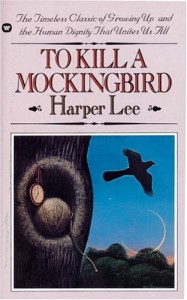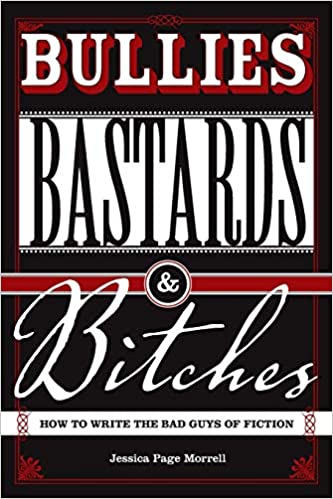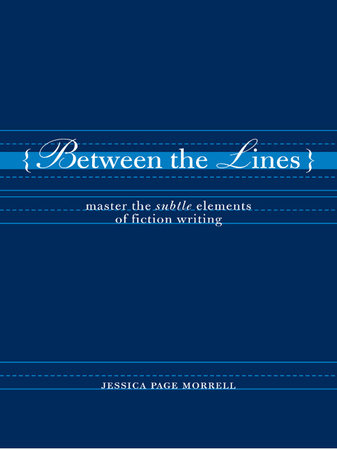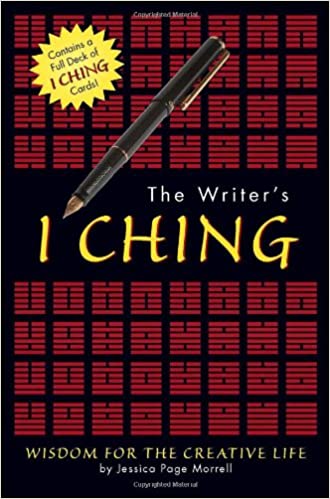 Theme
Theme
Jessica P. Morrell €
To write a plot or story, you have to be clear on what issues you want to present and then think of the events that will present those issues in action…I had to find that which was essential to the issue and then build an event around it. Ayn Rand
I don’t know about you, but during high school and college Lit courses I dreaded writing papers about the themes found in novels and short stories. Usually finishing the final labored sentence late Sunday night (it seems they were always due on Monday morning) I turned the paper in feeling like a fraud because it seemed written from both guesswork and arrogance. After all, Chaucer has been dead for centuries and did I really know what he was trying to convey in Canterbury Tales those many years ago?
Now that we’ve dredged up those assignments of yore, forget that tortured definition of theme, along with all its angst. In reality, theme is a fairly simple concept: it is what your story is about. This central idea serves as a unifying element and your characters’ actions and story world reflect it. Theme works as glue in the story, adds to the unity, and provides connecting threads that lend it significance and cohesion.
Theme is not the message, it is more like the soul of your story. But here’s the trick to theme that I want you to remember: It provides the boundaries for your story. You make decisions about your story based on your theme. It’s like when you are packing to move into a new house. As you sort through your belongings, you decide which objects to move, what to toss out, which items to sell at a yard sale.
Here’s a quick list of the benefits of working with theme:
- It lends the story emotional depth.
- Themes also add perspective to drama, especially tragedy, loss, death, grief, and sorrow.
- It gives cause-and-effect actions or results in stories meaning.
- It helps the writer explore his or her beliefs.
- Themes help the reader understanding the ramifications of the story events.
- Themes can focus and sharpen extended metaphors.
- Theme is one of the devices that breathes life into a story.
Here’s another trick for tracking down themes in your own work—it can be compared to the themes found in real life such as in holidays or cultural markers. The theme of Mardis Gras is merrymaking and outrageous celebration. The theme of Thanksgiving is gratitude, while the theme of Memorial Day is remembrance.
Likewise, in fiction and memoirs, theme can be stated in a single word or simple phrase. Novels always have a major theme and then often have one or two subsidiary themes. The themes in the film Guess Who’s Coming to Dinner are racism and intolerance. The premise, by the way, is “Love conquers all.” In To Kill A Mockingbird themes are about racial intolerance, injustice, and innocence lost. Alice Sebold’s memoir Lucky is about the trauma involved with rape and her novel Lovely Bones is about regret (although both have subsidiary themes).
Theme is unavoidable if you want to tell an interesting tale. Jerome Stern in Writing Shapely Fiction explains: “Though many writers like to think of themselves primarily as storytellers, yarn spinners, and fabulists, themes and ideas are inevitable. Every work raises questions, examines possibilities, and imagines the consequences of actions. You can’t avoid making meaning if you want to.”
Theme in memoir keeps the work from rambling, or being a mere collection of memories instead of a richly explored life. Without a theme a memoir can be thin, or on the other hand, tedious, and strictly autobiographical,especially if the person tries to list every major life event.
Judith Barrington, in Writing the Memoir explains the importance of theme: “Memoir, on the other hand, makes no pretense of replicating a whole life. Indeed, one of the important skills of memoir writing is the selection of the theme or themes that will bind the work together. Thus we discover, on setting out to read Patricia Hampl’s Virgin Time, that her chosen theme is the Catholicism she grew up with and her later struggle to find a place for it in her adult spiritual life. With a theme such as this laid down, the author resists the temptation to digress into stories that have no immediate bearing on the subject….”
 Two schools of thought exist about how theme works in the writing process. The first is that themes evolve naturally, emerging somewhat magically from the characters’ actions and story line, or perhaps the writer’s dream world. Or, in writing nonfiction, the tug of memory and passion will somehow provide the connections, which in turn will produce their offspring—theme.
Two schools of thought exist about how theme works in the writing process. The first is that themes evolve naturally, emerging somewhat magically from the characters’ actions and story line, or perhaps the writer’s dream world. Or, in writing nonfiction, the tug of memory and passion will somehow provide the connections, which in turn will produce their offspring—theme.
The second approach to writing with theme postulates that since theme is the glue in a story, you need it as the starting point from which the story unfolds. However, this approach has its own set of problems. Working with a predetermined theme might close off options for your plot and constrain the story. You’ll be so busy trying to squeeze a story around a theme that it might not have the logic, flow and causal relationships necessary.
If the theme of your story nags at you from the beginning, don’t worry, but also don’t allow it to act as a cruel dictator. If it doesn’t, trust that your story and its characters will whisper to you, just as when you write memoir the past whispers low and insistently. Trust too that as you work on your later drafts and spend time mulling over story events that the theme will appear.
When it comes to themes to base stories around, you have so many choices, but an easy place to start is with human weakness, fallibility, vulnerability and imperfections . You might want to also explore the rich territories of base instincts such as fear, greed, as well as powerful traits like loyalty and patriotism.
If you’re feeling stuck about finding the theme for your story, don’t try to wrestle it to the ground. Instead, return to your characters and think about the truths they’re revealing in their actions and choices. Notice how your story reflects on your own life, how all you’ve learned about love or death or greed is coming through.
While theme can be implied or plainly stated, it is never heavy-handed, shrill or trite. Thus don’t editorialize, and don’t stage your characters giving speeches about the theme.
Subplots are another means to amplify themes, but again, make sure the reader doesn’t feel ganged up on with every aspect of the story pointing to themes. An example of this is Barbara Kingsolver’s The Poisonwood Bible. Kingsolver is a gifted and thoughtful writer, but the themes in this book seem applied with cement.
If you focus too heavily on themes, then some of the capriciousness and chance of writing is lost. After all, you don’t want everything in the story preordained or outlined. Since your right brain functions are often associative, finding connections and harvesting inspirations, you want to grant this brain function room to roam. If you focus too hard on milking the theme, the magic that happens when writing might fail. You want to walk amid your story world with your characters winking at you, suggesting additions to your scenes. Or while writing nonfiction, letting the past and meanings you have discovered create a profound reality.
 On the other hand, if you write without themes, you might end up with a mere pile of episodes. A few last tips: While the final chapters will emphasize theme more than earlier ones, be careful about trying to tack on themes onto your endings or forcing characters to clamor atop a soapbox to deliver lectures. Be careful also of shifting themes during the story unless the reader can instinctively follow your change and make sense of it.
On the other hand, if you write without themes, you might end up with a mere pile of episodes. A few last tips: While the final chapters will emphasize theme more than earlier ones, be careful about trying to tack on themes onto your endings or forcing characters to clamor atop a soapbox to deliver lectures. Be careful also of shifting themes during the story unless the reader can instinctively follow your change and make sense of it.





Leave a Reply